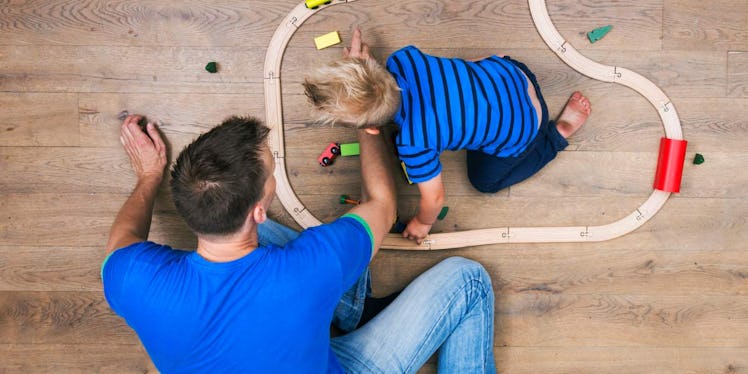Scientists Prove Children and Adults Pay Attention Totally Differently
New data from Ohio State University suggests parental anger at kids not being able to focus may be a tad misguided

Parents and teachers battle daily with getting children to just be quiet and pay attention already. But a new study shows that kids can’t really be blamed for their terrible attention spans. Are they bad at it? Sure. But only because their brains weren’t built to do it. And that turns out to be both a blessing and a curse.
Researchers from Ohio State University pitted adults and kids against each other in a battle of focus and recall. The 69 participants were split between 35 adults of varying ages and 34 4- and 5-year-olds, all of whom were given two tasks. In the first, participants were asked to watch a series of images featuring several shapes with different colors and focus on the changes in one particular shape. The second involved looking at a series of drawings featuring made-up animals. Again, participants were asked to focus on a single aspect of the drawing, in this case finding an X or O on the animal’s body.
In both tasks, adults were better than children in focusing on the changes of the shape or finding the X’s and O’s. But children were better at noticing changes that occurred to the shapes they weren’t told to watch. And in the animal slide task, the kids were also far better at remembering other unique animals characteristics, such as tail shape, even when they were not asked to pay attention to those things. In fact, kids could remember the animal details 77 percent of the time compared to the adults’ 59 percent.
“The point is that children don’t focus their attention as well as adults, even if you ask them to,” said study co-author Vladimir Sloutsky in the release. “They end up noticing and remembering more.”
Study authors concluded that adults have honed their ability to selectively tune out unimportant input. That’s very important, they suggested, when doing things like sitting through meetings or having long conversations. But kids’ brains seemed to be more primed to collect as much environmental input as possible. That makes it easy to learn a lot about new situations very quickly but doesn’t help much when being told to find their shoes. Which are right there. No there. No, look, right in front of you! The authors suggested this insight could help educators who may clutter tests or learning materials with too many distracting pictures and colors.
The study, published in Psychological Science, backs up previous research. One study from 2014 looked at children’s kindergarten learning environments. They found that kids learned more about science subjects they were unfamiliar with in classrooms that were devoid of all the colorful ephemera commonly seen on the walls in most kid classrooms.
In the end, the research suggests that parents and teachers should be taking a two-pronged approach when dealing with kid focus. The first: try to give them a break for their biological superpower. The second: understand the barriers to focus and, when necessary, reduce the world to essential black and white.
This article was originally published on